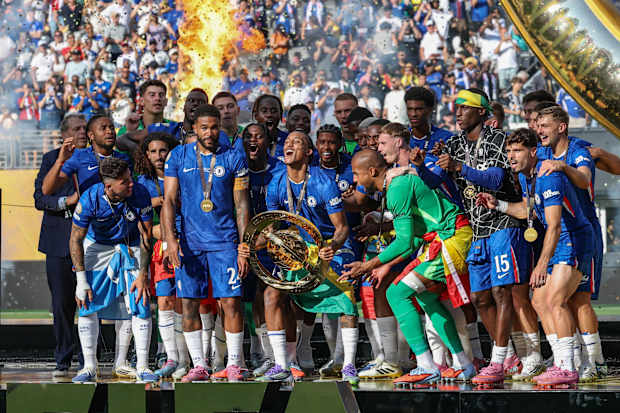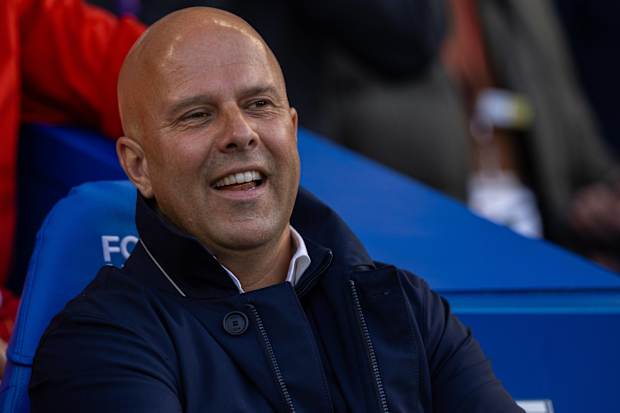Liverpool's Financial Strategy Behind Their Massive Transfer Spending Spree

The Fenway Sports Group (FSG) has built their reputation on financial independence throughout their tenure as Liverpool owners.
Although fans have sometimes expressed concern over what appeared to be a cautious transfer strategy, bringing in Jürgen Klopp enabled the Reds to compete at the highest level without depending on the vast financial resources of their rivals.
They have invested when required, with expensive signings proving crucial to their achievements under Klopp and current head coach Arne Slot. The Dutch manager guided the team to their second Premier League championship following a notably quiet summer in the transfer market, and their recent financial restraint has positioned them to change approach and pursue a significantly more aggressive strategy for the 2025–26 campaign.
Liverpool have been unusually heavy investors this summer, showing no indication of reducing their activity despite needing to comply with various financial regulations.
Liverpool's Summer Transfer Expenditure to Date

Prior to finalizing a deal with Eintracht Frankfurt for Hugo Ekitiké, Liverpool had invested roughly £215 million ($288 million) across five acquisitions. When the French striker's transfer is officially completed, the club's summer outlay will approach £300 million ($402 million).
The Reds acted swiftly to find Trent Alexander-Arnold's replacement by securing Jeremie Frimpong from Bayer Leverkusen for £29.5 million ($39.6 million), and brought in Andy Robertson's future replacement from Bournemouth, Milos Kerkez, for £40 million ($53.7 million).
Although strengthening both wing-back positions was essential for Liverpool this summer, their marquee signing came in attack as the Premier League winners outmaneuvered Bayern Munich to secure Florian Wirtz from Leverkusen for a record-breaking £116.5 million ($156.3 million) transfer fee. The acquisition of keeper Giorgi Mamardashvili from Valencia was arranged previously, but the Georgian has now joined this summer and will serve as Alisson's deputy.
The 24-year-old cost Liverpool £29 million ($38.9 million).
Premier League Clubs' Combined Transfer Spending

This has been an unusual transfer period for Premier League teams, with Chelsea and Manchester City's involvement in the expanded Club World Cup creating an early window from June 1 to June 10, before regular business resumed on June 16.
By mid-July, Premier League sides had collectively invested just over £1 billion ($1.34 billion)—an unprecedented amount by that point. With fewer than 50 days left in the window, considerable activity remains needed to surpass the record £2.36 billion ($3.17 billion) spent by Premier League clubs during summer 2023.
Liverpool and Chelsea are leading the spending charge, with the Blues topping the league's expenditure before Ekitiké's deal materialization. The world champions, based on Transfermarkt data, have invested £211m ($283 million) while receiving substantial compensation through their American tour this summer.
Manchester City have been active in midfield reconstruction, with their investment in players like Rayan Cherki and Tijjani Reijnders totaling £125.7 million ($168.6 million), while Arsenal and Tottenham have each invested slightly over £120 million ($173 million) on several new signings.
Newly-promoted Sunderland have also been significant spenders, hoping for a competitive top-flight campaign unlike last year's promoted teams. The Black Cats' squad transformation has cost £100.5 million ($134.8 million) so far.
Could Liverpool Violate PSR Regulations?

This represents Liverpool's costliest transfer window ever, easily surpassing their previous record from summer 2018 (£161.3 million, $216.3 million). That period brought Alisson and Fabinho, instrumental figures in the club's Premier League and Champions League triumphs under Jürgen Klopp, to Merseyside.
Their substantial summer investment for the 2025–26 season raises questions about potential Premier League Profit and Sustainability Rules (PSR) violations, but Liverpool are operating from financial stability this year following their restrained 2024 transfer activity.
PSR regulations allow clubs to record £105 million ($140.8 million) in losses across three years. Despite heavy spending, Liverpool are expected to generate over £700 million ($937 million) in revenue (according to The Athletic) for 2024–25 and have received £48 million ($64.4 million) from selling Caoimhin Kelleher and Jarell Quansah alone.
Their revenue is at an all-time high and, per The Athletic, they are England's most profitable club.
Luis Díaz and/or Darwin Núñez might still be sold, potentially helping Liverpool balance their accounts before the window closes.
Liverpool's Remaining Spending Capacity

Liverpool recorded a positive PSR margin of £48 million ($64 million) for the last financial year, providing room for additional spending beyond Ekitiké's arrival.
This amount, plus the £105 million loss allowance for all Premier League clubs over three years under PSR rules, effectively gives the Reds £153 million ($205 million) in flexibility.
Amortisation benefits allow Liverpool to distribute their summer transfer costs across each new player's contract duration, reducing financial pressure and PSR rule violation risks.
While we cannot specify exactly how much more Liverpool could invest this summer, there's indication that increased revenues, previous restraint, amortisation, and other factors could enable additional significant business before the summer transfer window concludes.
